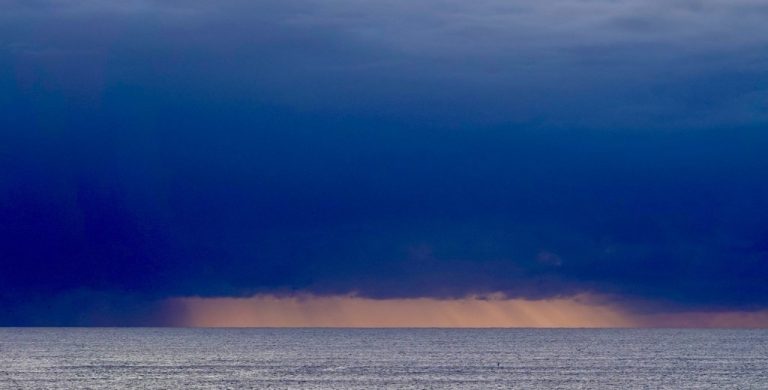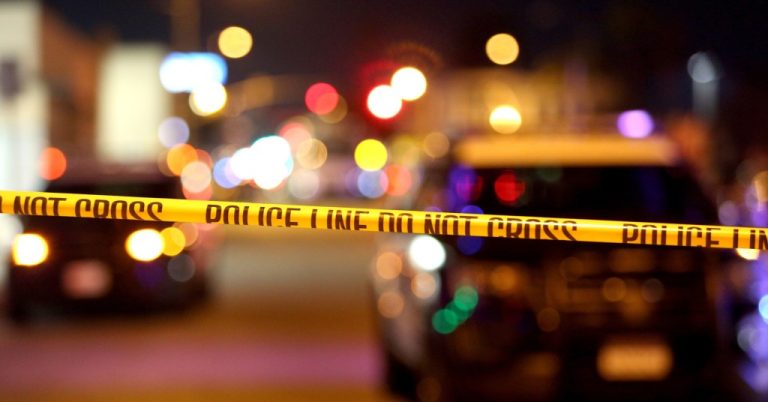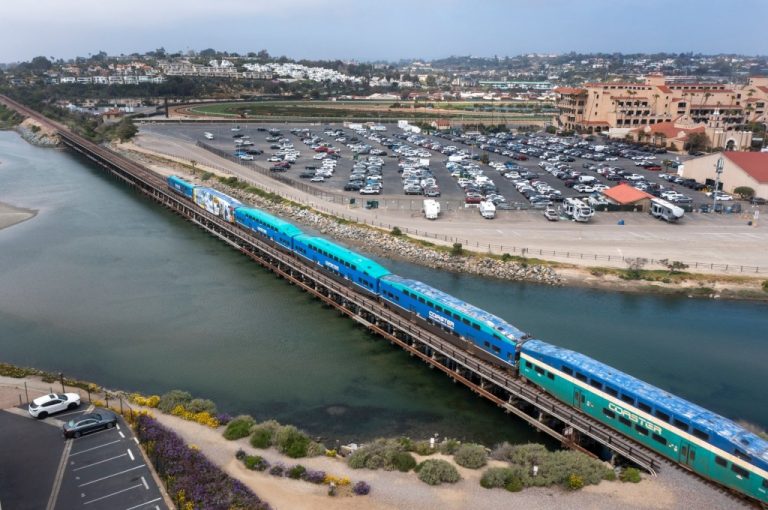The polarizing All Peoples Church project long planned for a vacant, 6-acre lot in Del Cerro hangs in the balance after city of San Diego leaders rejected approval of the required permits.
City Council members cited perceived flaws with the project’s traffic analysis, echoing community member concerns about safety.
On Tuesday the council voted 6 to 2 to deny the project, against the recommendation of city staff. The decision puts the future of the project, already more than six years in the making, in limbo, as the church evaluates how best to move forward.
“The original (traffic) data are faulty,” said Councilmember Raul Campillo, who represents Del Cerro and was the dominant voice of opposition on the council.
Campillo argued the project’s environmental impact report and associated traffic study grossly under counted weekday car trips associated with the facility’s planned basketball court, allowing the church to bypass a more thorough review of its potential traffic impacts.
“The project was improperly screened out of necessary, detailed (Vehicle Miles Traveled) analyses, and therefore the EIR is inaccurate; it’s incomplete, and this application is legally flawed,” he said.
Councilmembers Kent Lee and Sean Elo-Rivera voted against the motion to deny the project.
“On behalf of our church, we are disappointed in the outcome. We followed the rules, extensively analyzed our project and spent much time, effort and financial resources to bring forward something that would be a blessing to the community,” All Peoples Church Pastor Robert Herber told the Union-Tribune.
“But, as followers of God, we understand there is a reason behind everything and are undeterred about the future for our church. There is much need in our community, as the speakers in support articulated yesterday, so we will continue to pursue efforts to provide a place for worship.”
Started in 2008 by Herber, All Peoples Church is said to have a congregation size of around 800 adults and children, and is currently operating out of a City Heights facility with a lease set to expire in June 2024. In late 2017, the church purchased the irregularly shaped property near Interstate 8 and College Avenue, and it has been going through the process of amending the Navajo Community Plan to allow church use on land zoned for residential use.
The project calls for a 54,476-square-foot church building, situated near the College Avenue off-ramp, with a 900-seat sanctuary, a multipurpose room with a basketball court, and second-floor classrooms and staff offices. The project includes a two-level, 71,010-square-foot parking garage with 203 spaces just north of the church building and 116 surface spots along College Avenue. Also planned is a new intersection with a traffic signal at the church’s primary entrance.
The project in its current form requires a general plan amendment, community plan amendment and site development permit, as well as certification of the project’s environmental impact report. Council members were required to cast their vote solely based on land-use matters in light of the federal protections provided to churches by the Religious Land Use And Institutionalized Persons Act.
In August, the community planning group, Navajo Community Planners, voted unanimously to deny the project’s approval. In September, the San Diego Planning Commission voted unanimously in favor of the project on condition that the church eliminate some of its surface parking and prohibit elementary or preschool use.

A rendering of the All Peoples Church project, which includes a 54,476 square-foot sanctuary building with classrooms, offices and a multipurpose gym. The project, proposed for a vacant lot in Del Cerro just north of Interstate 8 and east of College Avenue, also calls for a two-story parking garage. The rendering is a view of the church, looking north from College Avenue.
(Courtesy, All Peoples Church)
Tuesday’s City Council meeting dusted up years of controversy surrounding the church project, which opponents have branded as a “megachurch.”
There were 133 public speakers at the meeting, with sentiment split between impassioned support for a church that has changed lives and opposition from residents convinced that the neighborhood they love would be ruined by such a large facility.
“I have been a member of this church for over a decade, and I’ve seen firsthand the goodness of the faith-based community and its impact on hundreds of people. … I’ve seen marriages restored and young people put their lives back together,” said Jon Sundt, who started the drug prevention nonprofit Natural High. “Please give us the constitutional freedom of turning this long standing, vacant lot between a gas station and an eight-lane freeway into an institution where we can practice our faith and love on the people of San Diego.”
Members of the community group Save Del Cerro, which has for years strongly opposed the project, argued that All Peoples Church is out of scale for the neighborhood, and that the volume of additional car traffic would be a safety hazard. The group also hired its own consultant, RK Engineering, to debunk the project’s traffic claims. RK Engineering determined that additional analysis was required.
“I stand here today as the voice of over 1,000 concerned Del Cerro citizens,” said Barbara Blakeley of the Save Del Cerro group. “The reasons to deny this project are as clear as they are compelling. The project fails to conform with the city’s municipal code, and as such cannot meet the requirements for approval. It is inconsistent with the Navajo Community Plan, designed to preserve the character and livability of the community. It was unanimously denied by the Navajo Community Planners, reflecting a collective community stance. It is detrimental to the health, safety and welfare of the community, all necessities to meet legal findings required for approval.”

The Save Del Cerro group, which branded the proposed church a mega project, is opposed to the size of the facility and its presumed traffic impacts.
(Jarrod Valliere / The San Diego Union-Tribune)
According to the project’s environmental impact report, All Peoples Church is projected to have a less-than-significant impact on traffic, generating an average of 280 car trips on weekdays and 1,976 trips on Sundays. As such, the project met the city’s screening criteria for a small project of less than 300 average daily trips. A full Vehicle Miles Travel analysis was not required.
Councilmember Campillo called into question the determination, zeroing in what he referred to as “inaccurate” traffic assumptions associated with the church’s multipurpose gym and its basketball court.
The city of San Diego, which was the lead agency for the state-mandated review, used San Diego-based LOS Engineering for the trip generation study. The firm, using information provided by the church, estimated that the gym would have five daily users, on average, and generate 10 car trips.
“There is no way that 10 trips is a reasonably accurate forecast for trips caused by the gym,” Campillo said. “LOS engineering calculated 10 trips, and this keeps it just under 300 (daily trips) so that (the project) avoids triggering a more in-depth traffic study, and ultimately avoids actually addressing very real traffic safety impacts that this would have on Navajo residents and the surrounding community.”
City staff told council members that All Peoples Church is required to use the site as proposed in the development application, which did not include outside use of the basketball court. Safety impacts were also heavily scrutinized, staff said.
“Staff did analyze the project as represented to the city,” said Martha Blake, who is a senior planner with the city. “We feel that the EIR and the information in that document, and as represented today, reflects the project that we have recommended for approval.”
Justin Rasas with LOS Engineering said the gym’s use was calculated in a blended away alongside other church activities, given that the facility does not have bleachers and is intended to be used by people at the church.
“The basketball court … is baked into the (total) trip generation rate,” he said. “It’s improper to cherry pick pieces out of a project.”
Representatives for All Peoples Church also offered to remove the basketball court from the project, but council members did not consider the proposition.
As it stands, the church can resubmit an altered development application or challenge the council’s decision in court.






